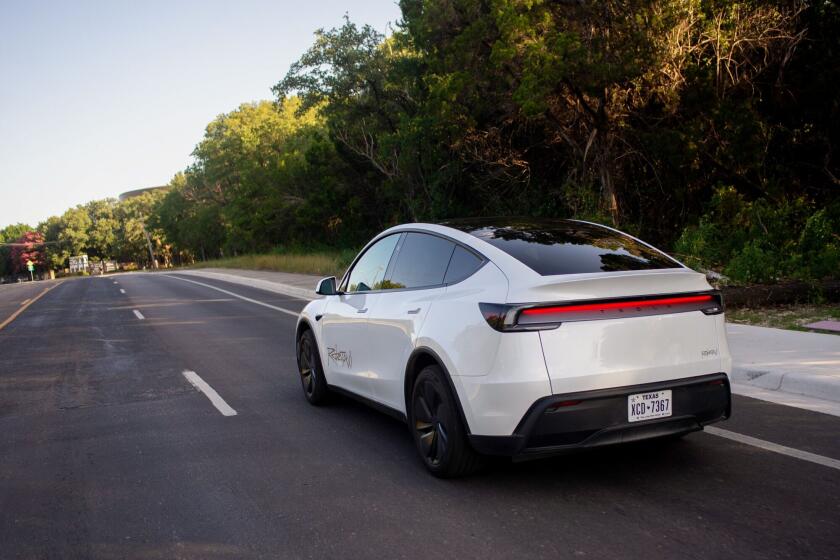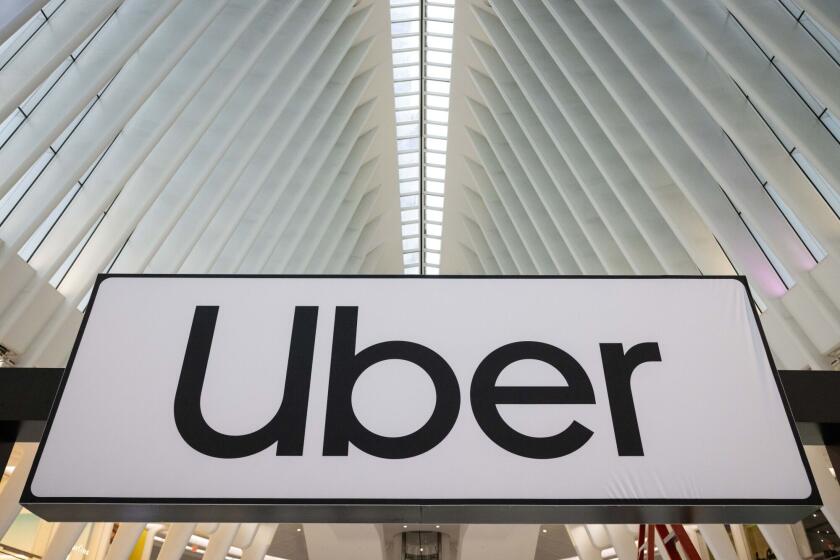A Long Road of Hope and Despair : Poverty and a Bit of Promise Line King Boulevard
- Share via
We must face the tragic fact that the Negro is still not free. . . . One hundred years later, the Negro lives on a lonely island of poverty in the midst of a vast ocean of material prosperity.
Twenty-five years after Dr. Martin Luther King Jr. uttered that phrase from the steps of the nation’s Capitol, a homeless black man stood at a corner of King Boulevard in Los Angeles and pondered the minister’s words.
He met King once. “I was 6 years old at Dunbar Elementary School in Washington, D.C. I shook his hand--it was cold,” said Cleven Ramsey, smiling and shivering at the memory Wednesday afternoon. And when King talked, he said, “it was like a chill went through your body.”
“A man of his strength, he’d seen a lot of ghettos--Washington, D.C., Selma, Ala., different places,” Ramsey, 30, said in an interview in a burned-out building at the corner of King Boulevard and Alameda Street that he and a dozen other black men call home.
But no matter what King saw in 1960s Alabama, he wouldn’t be ready for 1980s California or the eastern end of Martin Luther King Jr. Boulevard, Ramsey said.
‘End of the Line’
“This is the end of the line for his boulevard,” said Ramsey, glancing at the mounds of garbage and graffiti-scarred buildings that mark the beginning of the thoroughfare named for the slain civil rights activist. “This is the bottomless pit, no utilities, no running water. . . . When I first came from back east and found this place, I never imagined people would be living like this.”
In short, said Ramsey, when King went to the mountaintop and saw the promised land, he wasn’t looking at this stretch of King Boulevard.
“This,” Ramsey said, “is a different part of the mountain.”
Martin Luther King Jr. Boulevard, stretching from a run-down industrial section of central Los Angeles to the sprawling Baldwin Hills Crenshaw Plaza shopping mall, is a seven-mile tribute to King’s memory.
What had been Santa Barbara Avenue was renamed in 1983. The thoroughfare starts out as a narrow two-lane street, dividing brand-new office buildings from dilapidated warehouses that sit behind razor wire. It blossoms into a boulevard at Central Avenue, gliding under the Harbor Freeway past frame houses, weathered apartment buildings, and mom-and-pop businesses. It brushes past the middle-class community of Leimert Park, intersects the $120-million Baldwin Hills Crenshaw Plaza, cuts through the area once known as the “Jungle” and ends in the shadow of Baldwin Hills, an affluent integrated community.
It is a street of contrasts. And to walk along the boulevard, named for a man who spoke of visions, is to see a street that reflects the progress--and problems--of a people.
“If Martin Luther King would drive down this street now, if he knew some of the things going on, he’d turn over in his grave,” said Geraldine Taylor, 51, a teacher at a preschool near the intersection of King and Central Avenue. “He’d say, ‘Oh Lord, what happened to my people?’ ”
The people, says Ernest Polk, lost their homes and their jobs--and they stopped dreaming.
“I saw the whole area fall,” said Polk, 35, whose family has lived on the easternmost end of King Boulevard, near Long Beach Avenue, since 1964. “A lot of them in this neighborhood lost their homes because (they became addicted to) drugs. This street used to be 100% black. Now it’s mainly Hispanics and it all happened during Reaganomics.”
Polk, who is unemployed, scanned the block--a burned-out house on one corner, gang names scrawled on the walls. “Once upon a time, this area was prosperous. The kids had the CETA program (the federal Comprehensive Employment and Training Act) to keep them interested and the kids could buy their own school clothes.”
But the CETA program ended and industry moved out. “Now these kids are dropping out of school to sell drugs,” said Polk, sweeping the sidewalk in front of his mother’s home.
“This is what King was talking about--poverty. This area is not developed. There hasn’t been a change over here. . . . For this being the land of the free and the home of the brave, I don’t too much see it,” Polk said.
Neither does Eric (Blue) Green, a homeless man who spends most of his time a block away from where Polk lives. “One man cannot change everything. He can only start the ball rolling. It was up to us to keep that ball rolling,” said Green as he gathered scrap aluminum to sell for 25 cents a pound.
A few blocks west at Children’s World, where the street is lined with well-tended homes and playing children, Geraldine Taylor stood in the playground with her hands on her hips and looked up and down the boulevard.
Thursday morning black and Latino children sat together under drawings of Martin Luther King and sang “We All Live Together,” a children’s version of “We Are the World.”
“I marched with Martin Luther King, I helped get people to vote,” Taylor proudly remembered. “It is an honor they named this street after King.”
But, added Taylor, the street has a long way to go before it is as great as the man it is named for. “We have people walking down this street hungry, begging for food . . . (and) we had to put up a fence and an alarm system in the church because of break-ins,” she said.
Signs of prosperity become more plentiful farther west on the boulevard. By Wilton Place, the small businesses and run-down apartment buildings have been left behind, and well-kept ranch-style homes stretch out in the distance.
But a few blocks west, on the other side of Baldwin Hills Crenshaw Plaza, it isn’t so lovely. The tree-shaded streets and brand-new Woodlake mini-mall at the corner of Coliseum Street and King Boulevard belie the reputation of a neighborhood now called Baldwin Village, but until recently known as “The Jungle.”
But the mall, some say, could change everything. It could make the entire boulevard prosper, make the entire community unite.
“I’m proud of the boulevard now, since the mall is here,” said Johnny Narcisse, 50, who lives three blocks away from the Baldwin Hills Crenshaw shopping complex. Before it was refurbished, Narcisse said, “I was thinking of moving. But now I’m going to stay and build on to my house.”
King would be proud, he said. “The people around the mall are beginning to be proud of their community now,” said Narcisse, eating a corn dog inside the shopping center. “I think since we got this mall now, we should improve around it,” said Narcisse. “I hope blacks will work together and try to help each other do better.”
More to Read
Sign up for Essential California
The most important California stories and recommendations in your inbox every morning.
You may occasionally receive promotional content from the Los Angeles Times.













